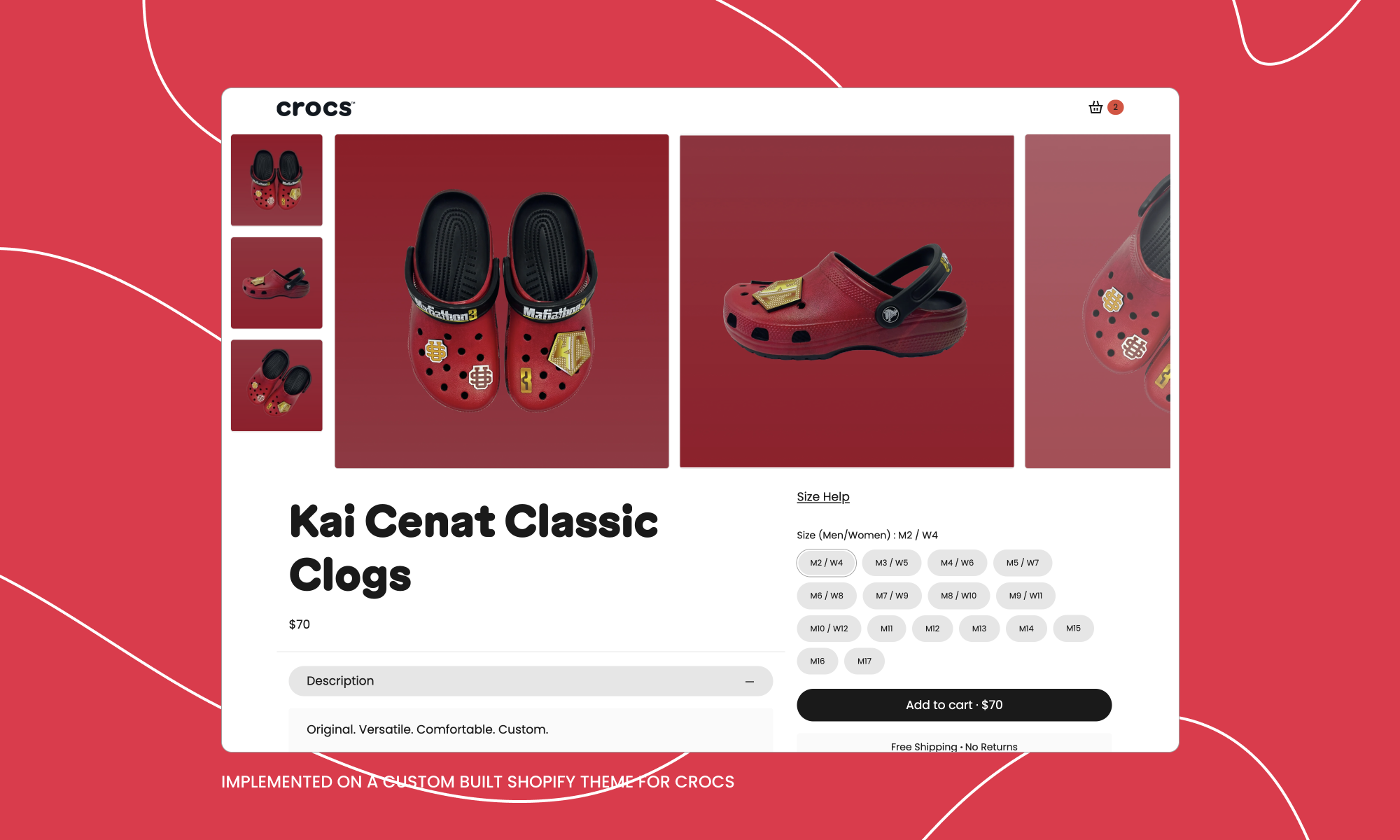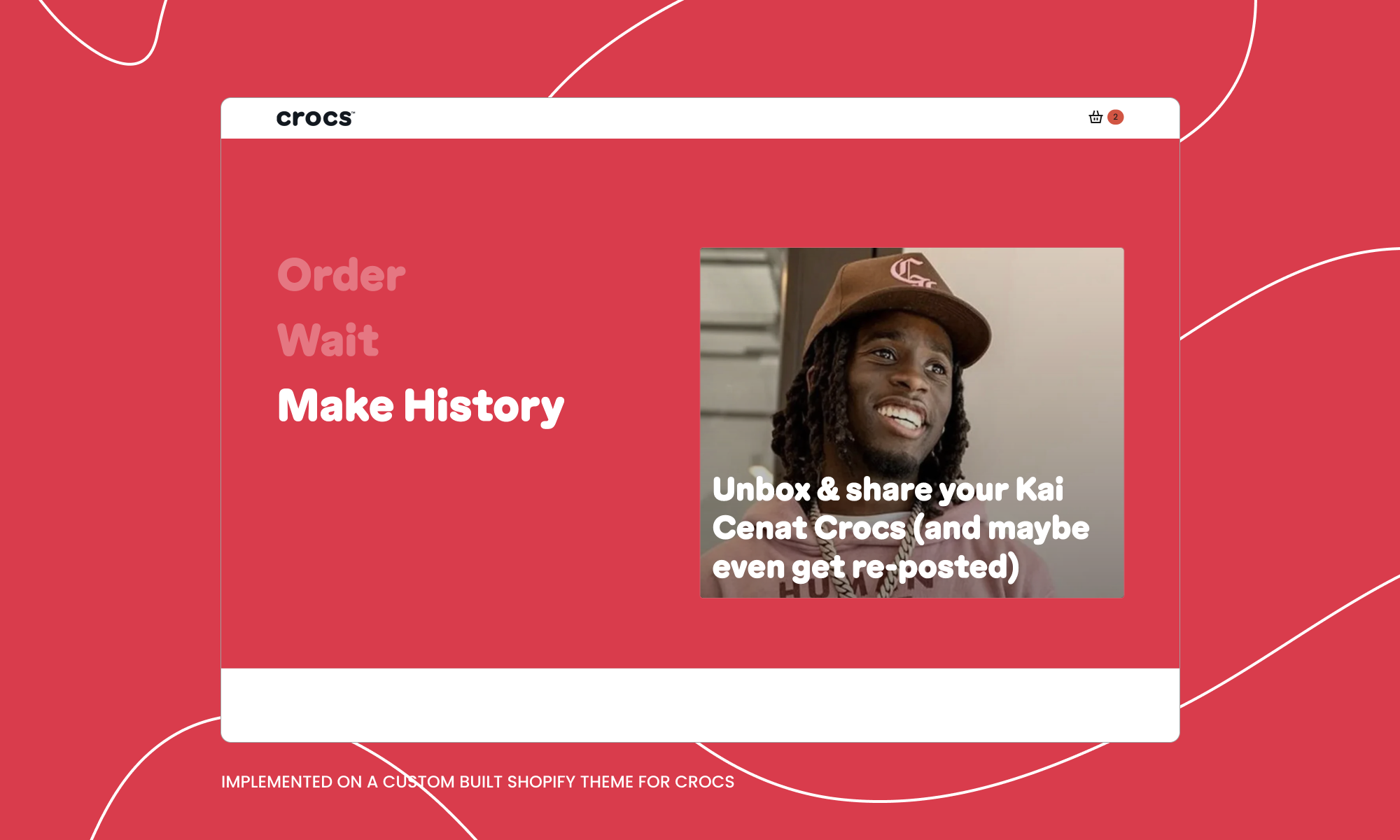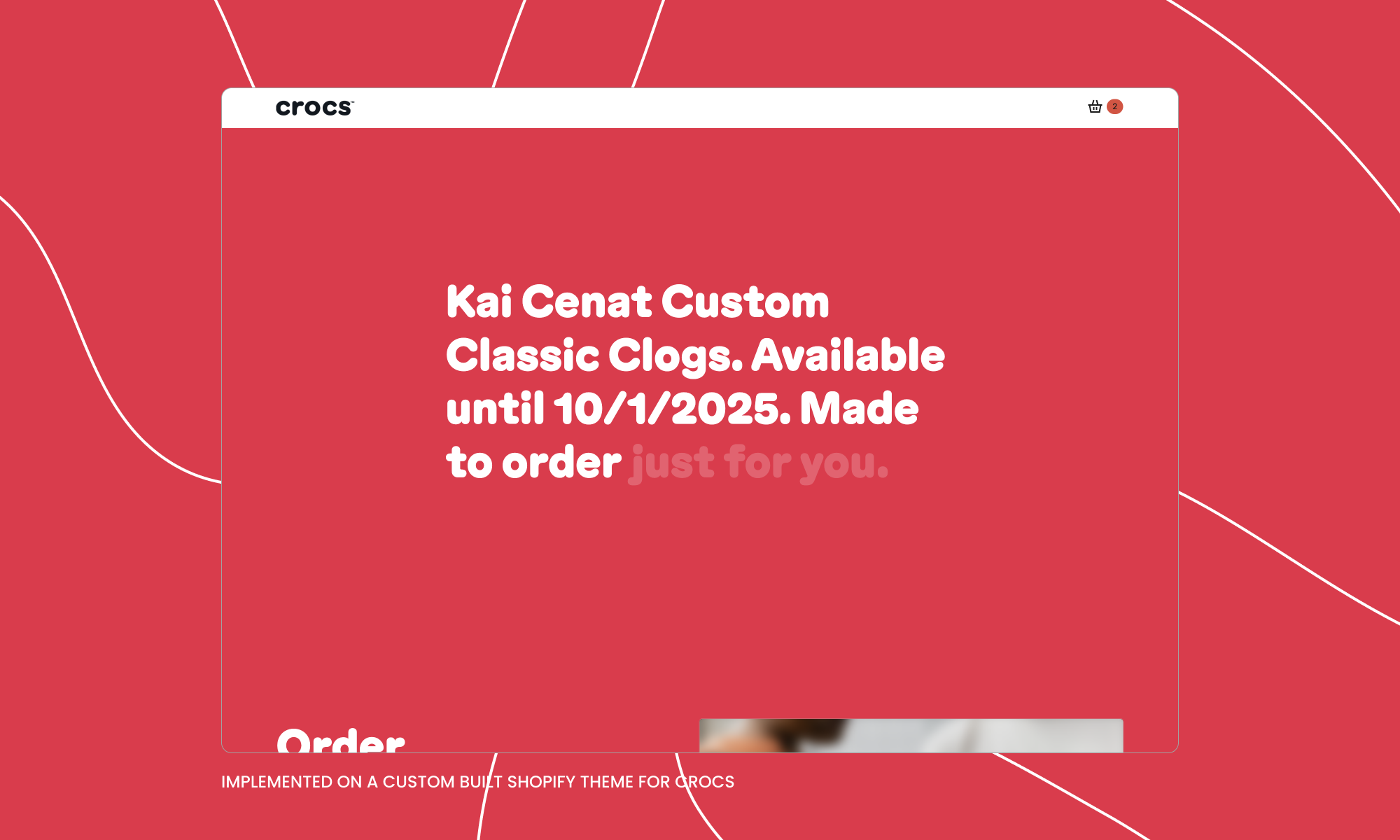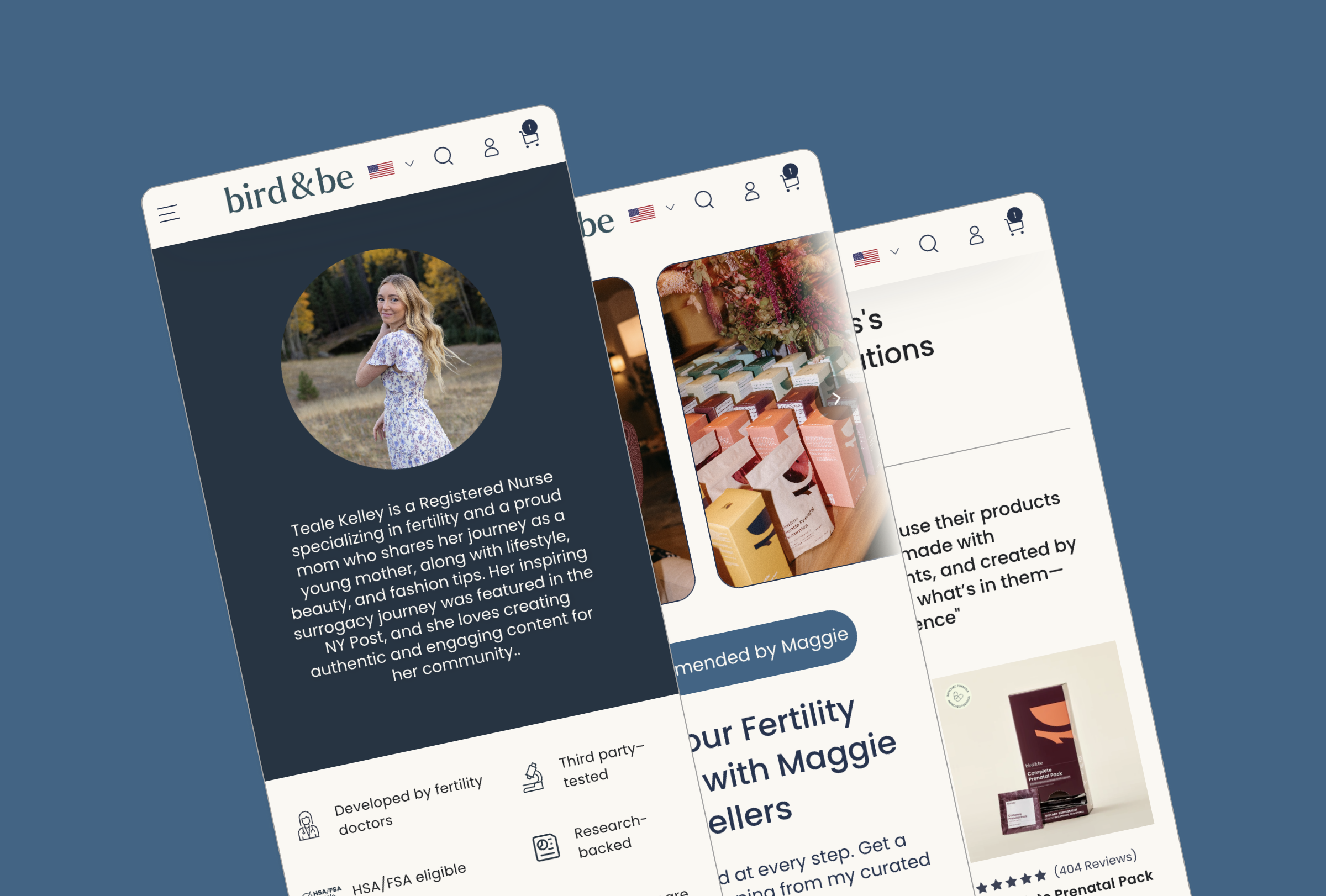The Problem: Hype Drops That Disappear Into the Void
Crocs has mastered the art of the collaboration. Limited-edition drops with celebrities, designers, and now creators have become a cornerstone of their brand strategy—transforming what was once considered an "uncool" shoe into a genuine cultural phenomenon.
But here's the challenge most brands face with creator collabs: the hype is massive, but the infrastructure is makeshift.
Traditional collaboration launches typically look like this:
- A custom product gets created
- The creator posts about it on social media
- Traffic gets funneled to a generic product page or affiliate link
- The brand scrambles to track attribution
- The moment ends as quickly as it began, leaving no lasting digital footprint
The problems compound quickly:
When a creator with millions of followers announces a collab, where does that traffic actually go? A standard product page that mentions the creator in the description? An affiliate link that strips away any sense of partnership? These solutions feel disconnected from the energy and personality that made the collab exciting in the first place.
Even worse, these launches often leave money on the table. No branded cart abandonment emails. No way to capture search traffic from fans Googling the collab weeks later. No mechanism to showcase the creator's personality alongside the product. Just a spike in traffic, a surge in sales, and then... nothing.
And for enterprise brands running on platforms like Salesforce Commerce Cloud, there's another friction point: moving fast is hard. Custom storefronts require dev tickets, sprint planning, and cross-team coordination. By the time the infrastructure is ready, the cultural moment has passed.
For a brand like Crocs—trying to stay culturally relevant through authentic creator partnerships—this approach doesn't just feel insufficient. It feels like squandered potential.
The Solution: A Creator Storefront That Matched the Moment
When Crocs partnered with Kai Cenat—one of the most-watched streamers on the planet—they knew this couldn't be just another affiliate link drop.
Kai had just completed a marathon streaming event, and the timing was perfect for unveiling something special: a custom red colorway of Crocs' Classic Clogs with exclusive Jibbitz charms, designed in collaboration with Kai himself.
But instead of directing his millions of followers to a generic product page, Crocs built Kai a fully co-branded storefront powered by CreatorCommerce—a dedicated digital space that felt like his store, not just a Crocs page with his name slapped on it.

Breaking Free From Enterprise Constraints
Here's where it gets interesting: Crocs runs their main eCommerce operation on Salesforce Commerce Cloud. It's a robust, enterprise-grade platform—but it's not built for the speed and flexibility that creator collabs demand.
CreatorCommerce set up Crocs with a custom theme on a self-managed Shopify instance—essentially giving them a parallel commerce environment purpose-built for creator partnerships. Same brand standards. Same product data. But with the agility to launch custom storefronts in days, not months.
This is something CreatorCommerce offers to any brand looking to move fast and break out of their commerce stack when needed. You don't have to migrate your entire operation or abandon your enterprise platform. You just need a dedicated environment where creator collabs can thrive without getting bottlenecked by corporate development cycles.
The CreatorCommerce team exceeded our expectations by expertly guiding us through the creation and setup of our creator stores. Their support was consistent and invaluable, ensuring the success of our first—and largest—store launches.
— Jake Hayes, Manager - Custom Crocs Operations
Morphing the Business Model to Match the Creator Economy
This wasn't just about giving Kai a commission. It was about evolving how Crocs approaches collaborations entirely.
The custom SKU—Kai's red colorway with signature Jibbitz—became the hero of a shopping experience designed around him. His personality. His audience. His aesthetic. The storefront wasn't a product page; it was an extension of the drop itself, a destination that matched the energy of his announcement.

Crocs integrated product customization tools like Expivi directly into the storefront, allowing Kai's audience to personalize their Clogs even further. Want Kai's exact colorway? Done. Want to add your own twist? Go for it. The experience mirrored the creative freedom that makes Crocs collaborations exciting in the first place.
And because CreatorCommerce passes data downstream to Crocs' entire tech stack—from inventory systems to email platforms to analytics tools—everything stayed connected. No Frankenstein integrations. No data silos. Just a seamless experience from storefront to checkout to post-purchase engagement.
The Metrics: When Infrastructure Meets Influence
The results validated the approach immediately:
350,000 organic sessions flooded Kai's storefront in just seven days. Not paid traffic. Not affiliate click-throughs bouncing off a generic landing page. Real, sustained interest in a destination built specifically for this collaboration.
But here's the stat that should make every brand rethink their collab strategy: 30% of traffic came from Google search.
Think about that. Nearly one-third of visitors found Kai's storefront by searching for it. They Googled "Kai Cenat Crocs," "Kai Cenat red Crocs," or similar queries—and they found a real, branded, on-site destination.
This is the power of a web footprint versus a disposable affiliate link. An affiliate link disappears into the ether. A co-branded storefront becomes a searchable, indexable, lasting asset that captures demand long after the initial social posts fade from feeds.
And when visitors didn't convert immediately? Co-branded cart abandonment emails featuring Kai's storefront branding achieved an 11% click rate—significantly higher than generic cart recovery emails. The personalization extended beyond the storefront itself, creating a cohesive experience that reminded fans this wasn't just any Crocs drop. It was Kai's drop.
A Template for Future Collabs
The Kai Cenat collaboration proved a concept Crocs can now replicate at scale: creator collabs deserve creator storefronts.
Looking forward, Crocs is using this playbook to open up more collaborations that blend product novelty with digital experience. Custom colorways. Exclusive Jibbitz sets. Personalization options. All housed in co-branded storefronts that feel authentic to each creator while maintaining Crocs' brand standards.
CreatorCommerce makes this sustainable. Each storefront can have its own look and feel—matching the creator's vibe—while still pulling from Crocs' product catalog, integrating with their customization tools, and feeding data back into their existing systems.
It's the fusion of hype culture and enterprise infrastructure. The best of both worlds.


The Moat: Collabs That Compound, Not Cannibalize
Here's what makes this approach so powerful long-term: every creator storefront becomes a permanent asset, not a temporary campaign.
Traditional collab drops are zero-sum. They spike traffic, generate sales, and then disappear. The next collab has to rebuild momentum from scratch.
But when each collaboration lives on as a searchable, branded storefront, something different happens. Fans discover old collabs while searching for new ones. Collectors browse multiple creator storefronts to see the full range of limited editions. Each partnership reinforces the others, building a constellation of cultural relevance rather than isolated moments.
Crocs isn't just doing drops. They're building a cultural archive.
And for creators, the value proposition shifts too. They're not just promoting a product—they're launching their own store. A destination they can drive traffic to repeatedly, that showcases their unique collaboration, and that gives their audience a shopping experience worthy of the partnership.
That's what keeps Crocs in the zeitgeist. Not just one viral moment with Kai Cenat, but a repeatable model for turning cultural cache into lasting brand value—one creator storefront at a time.
For brands navigating the creator economy, Crocs offers a blueprint: match your infrastructure to the influence, give collaborations a real home on the web, and build experiences that compound instead of cannibalizing each other. And if your current commerce stack can't keep up? Break out of it.












%201.png)
%201.png)